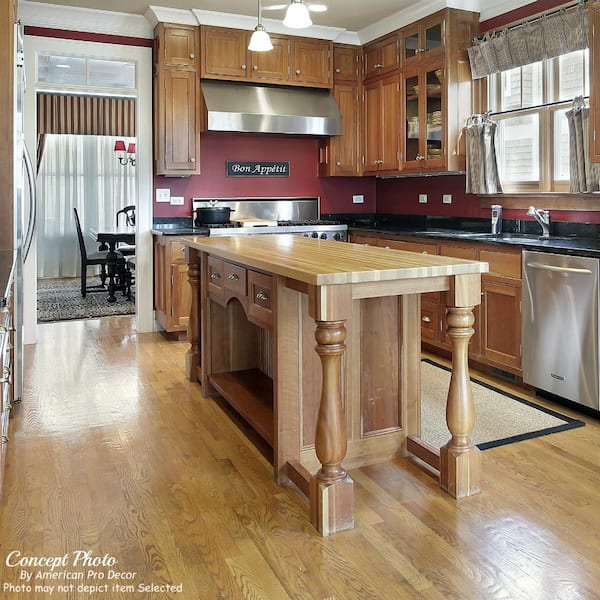Boost Your Room with Trendy Legs For Kitchen Island Layouts
Boost Your Room with Trendy Legs For Kitchen Island Layouts
Blog Article
Important Variables to Consider When Choosing Legs For Kitchen Island
Selecting the appropriate legs for a cooking area island involves a careful evaluation of multiple aspects that can dramatically influence both capability and aesthetic appeal. As we discover these elements, it ends up being clear that each decision can have significant effects for the overall kitchen area experience.
Product Options
When choosing legs for a kitchen area island, recognizing the different product alternatives is vital for accomplishing both aesthetic allure and structural honesty (Legs For Kitchen Island). The selection of material significantly influences not only the longevity of the island however also its total style and capability
Timber is a preferred selection, using heat and versatility. Strong woods, such as oak or maple, offer stamina and can be discolored or painted to match the kitchen decoration. Metal legs, commonly made from stainless steel or functioned iron, add a commercial and modern-day feel while making sure durability and security. These products are resistant to put on and can support substantial weight, making them excellent for bigger islands.
An additional option is crafted products, like MDF or plywood, which can be extra cost-efficient while still offering a series of surfaces. Nonetheless, they may not supply the same degree of security as solid wood or steel. Materials such as acrylic or glass can create a contemporary appearance, though they might call for additional support to ensure stability.
Eventually, the option of material for kitchen island legs ought to straighten with the desired functionality and the overall style of the kitchen area.
Style and Layout

When considering design, the form and surface of the legs are crucial. Tapered legs can supply a sense of agility and beauty, while thicker, more robust legs can communicate stamina and security. Additionally, the surface-- be it repainted, discolored, or natural-- ought to enhance the cabinets and countertop products to create a unified look.
Additionally, the style of the legs can likewise show personal preference. Custom-made or decorative legs, such as those featuring detailed makings or distinct geometric forms, can act as centerpieces, adding character and character to the cooking area. Inevitably, the ideal choice will not just improve performance yet additionally raise the aesthetic appeal, making the kitchen island a standout function of the home.
Height Factors To Consider
Picking the ideal height for kitchen island legs is crucial, as it directly influences both performance and convenience. The conventional height for a cooking area island usually varies from 36 to 42 inches, lining up with typical countertop elevations.

It is likewise important to represent users' preferences and heights. Tailoring the height can make sure a comfy experience for all relative, making the kitchen area island a more practical and satisfying area.
Weight Support
Making certain sufficient weight support for kitchen area island legs is crucial for both safety and security and performance. The kitchen island commonly offers several objectives, consisting of food preparation, eating, and added storage, necessitating try this out a durable assistance framework. When choosing legs, it is important to consider the overall weight capacity required based on the island's meant usage and the materials that will certainly be put on it.
The option of material for the legs plays a considerable duty in their weight-bearing capacities. Strong wood, metal, and sturdy composites generally provide remarkable strength contrasted to lighter products. In addition, the design of the legs-- whether they are right, tapered, or have a pedestal kind-- can influence their capability to distribute weight effectively across the structure.
Constantly get in touch with the producer's specs regarding load limitations to guarantee that the legs can maintain the intended weight without jeopardizing safety. In summary, selecting kitchen area island legs with ample weight support is vital for producing a functional and safe culinary space.
Installation and Maintenance
Correct setup and maintenance of kitchen area island legs are important for guaranteeing longevity and security. This frequently includes securing the legs to the island base using ideal bolts, guaranteeing that the legs are level and lined up.
When installed, regular upkeep is required to maintain the integrity and appearance of the legs - Legs For Kitchen Island. For wooden legs, routine cleaning with a damp towel and application of ideal timber polish can avoid see post moisture damage and maintain their finish. Steel legs might need a mild cleansing solution to get rid of grease and crud, adhered to by a dry cloth to avoid corrosion development
In addition, check the legs on a regular basis for indications of wear or damage, such as splits or loosened joints. Tightening screws or bolts as required can additionally lengthen the lifespan of the legs. By adhering to these setup and upkeep practices, home owners can make sure that their kitchen area island stays durable and visually appealing for many years to find.
Final Thought

Aesthetic coherence is extremely important in choosing the design and layout of legs for a kitchen island, as these elements considerably affect the total setting of the room. Tapered legs can give a feeling of agility and beauty, while thicker, much more robust legs can convey toughness and stability.Picking the ideal elevation for cooking area island legs is critical, as it directly influences both performance and convenience. In recap, selecting kitchen area island legs with sufficient weight assistance is vital for developing a practical and safe cooking area.
In conclusion, selecting legs for a cooking area island requires cautious factor to consider of numerous aspects, consisting of material official site alternatives, style, elevation, weight support, and setup.
Report this page